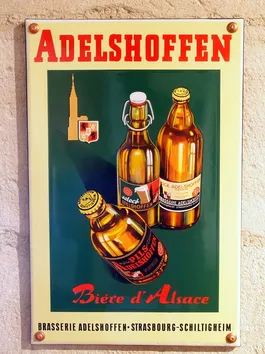Once upon a time, in a bustling city, there existed a peculiar and intriguing industry known as advertising museums. These were not your ordinary museums; they were repositories of creativity, innovation, and the intricate artistry of advertisement campaigns. Each museum housed a treasure trove of artifacts, showcasing the evolution of the advertising world, from the early days of print media to the digital revolution.
Among the many advertising museums scattered across the world, there stood one that reigned supreme – “The Museum of Tainted Taints.” This establishment, located in the heart of a culturally rich neighborhood, had a notorious reputation among advertising enthusiasts. Its grandeur was unparalleled, and its collection was said to be imbued with mystery and secrecy.
The museum boasted an extensive assortment of taints, which were regarded as the most coveted artifacts. These taints were the physical representation of advertising campaigns that had been deemed controversial, scandalous, or simply too audacious for the public eye. They symbolized the eternal struggle between artistic expression, societal norms, and the pursuit of commercial success.
Visitors marveled at the exhibits, immersing themselves in the world of iconic campaigns that had shaped history. They admired the taints, each encapsulating the essence of a provocative message that had disrupted the status quo. The museum beautifully curated these artifacts, carefully balancing the fine line between artistic audacity and social responsibility.
One day, amidst the whispers of curious visitors, a rumor began to circulate around the museum. It was said that hidden within its hallowed halls, there existed a secret room that housed the most daring and controversial taint of all time. This taint was said to have a profound impact on society, but its details remained veiled in secrecy, like a tantalizing enigma waiting to be unraveled.
News of this mysterious taint spread like wildfire through the advertising community, attracting enthusiasts and scholars from all corners of the globe. They yearned to witness the marvel that was so daring, it had been kept under lock and key. Among the crowd was a young, ambitious ad executive named Emma, determined to explore the depths of the museum and uncover the hidden truth.
Emma dedicated her days to immersing herself in the museum’s vast collection. She meticulously studied the essence of each taint, analyzing the creative genius behind every campaign. Her relentless pursuit of knowledge and her burning desire to find the secret taint fueled her journey deeper into the heart of the museum.
Guided by whispers and cryptic clues, Emma ventured into unexplored areas, navigating through labyrinthine corridors until she stumbled upon a door concealed within a dimly lit corner. With trembling hands, she turned the rusted knob, and as the door creaked open, she was met with a sight that left her breathless.
Before her stood a room adorned with shimmering lights, casting an ethereal glow on a single pedestal in the center. On it lay the secret taint, an artifact of unimaginable brilliance. Emma approached it with reverence and awe, her heart pounding with anticipation. What she saw was a mesmerizing representation of the delicate balance between art and commerce, a campaign that had pushed the boundaries of societal norms to their very limits.
As Emma delved deeper into her exploration, she discovered that the tale behind the secret taint was a cautionary one. It exposed the relentless pursuit of profit at the expense of ethics, the manipulative power of advertising, and the potential dangers of its impact on society. The secret taint served as a potent reminder of the responsibility that lay in the hands of advertisers, as they had the potential to shape minds, hearts, and even entire cultures.
Emma embarked on a mission to share her newfound knowledge with the world, to shed light on the dark underbelly of the advertising industry. Armed with her insights, she created a documentary series, capturing the essence of the secret taint and its profound implications. The series aimed to educate, to provoke critical thinking, and to inspire change within an industry tainted by questionable practices.
Through her work, Emma initiated a wave of introspection within the advertising community. Many advertising museums, inspired by her efforts, reevaluated their collections and sought to educate the public about the complex relationship between ads, society, and the individual. They aimed to spotlight not only the triumphs but also the taints that had shaped their industry, championing transparency and ethical practices.
“The Museum of Tainted Taints” became a symbol for the transformation of advertising museums worldwide. It sparked conversations, challenging traditional narratives and promoting responsible creativity. Visitors embarked on immersive experiences, engaging with thought-provoking exhibits that encouraged them to question the messages embedded within advertisements.
In the end, the enigma of tainted advertising museums revealed a complex story, one that painted a vivid picture of an industry forever evolving, grappling with its own power and influence. The secret taint served as a powerful reminder that, ultimately, the responsibility to safeguard ethics and integrity fell upon the advertisers themselves. It was a call to action, urging them to overcome the taints of the past and build a future where advertising would be a force for positive change.
And so, the tale of the advertising museums continued, forever evolving, challenging, and inspiring. As visitors left “The Museum of Tainted Taints,” they carried with them a newfound appreciation for the complexities of the advertising world, forever mindful of the delicate balance between artistic expression and the potential taints it may leave behind
